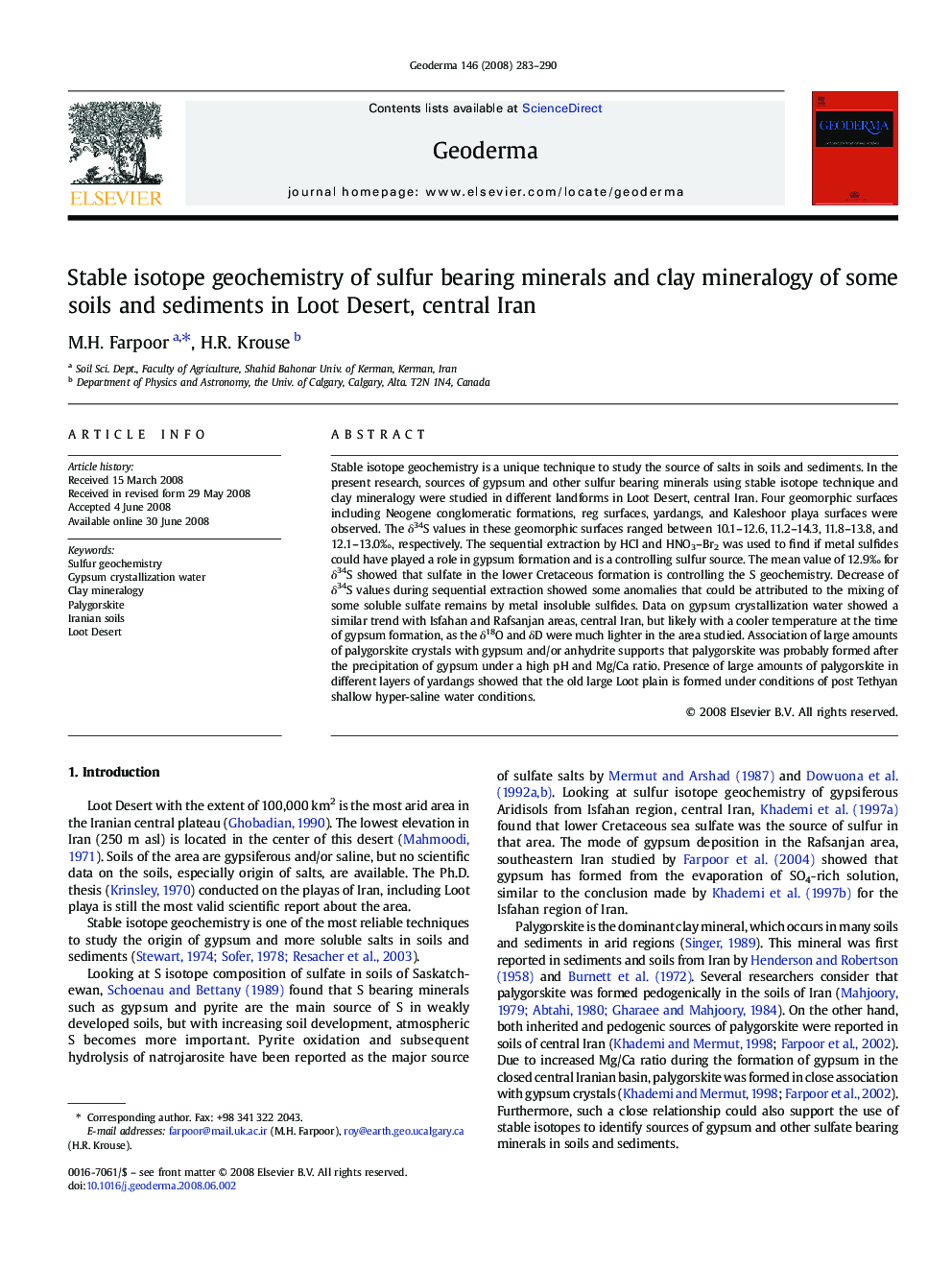| کد مقاله | کد نشریه | سال انتشار | مقاله انگلیسی | نسخه تمام متن |
|---|---|---|---|---|
| 4575061 | 1629541 | 2008 | 8 صفحه PDF | دانلود رایگان |

Stable isotope geochemistry is a unique technique to study the source of salts in soils and sediments. In the present research, sources of gypsum and other sulfur bearing minerals using stable isotope technique and clay mineralogy were studied in different landforms in Loot Desert, central Iran. Four geomorphic surfaces including Neogene conglomeratic formations, reg surfaces, yardangs, and Kaleshoor playa surfaces were observed. The δ34S values in these geomorphic surfaces ranged between 10.1–12.6, 11.2–14.3, 11.8–13.8, and 12.1–13.0‰, respectively. The sequential extraction by HCl and HNO3–Br2 was used to find if metal sulfides could have played a role in gypsum formation and is a controlling sulfur source. The mean value of 12.9‰ for δ34S showed that sulfate in the lower Cretaceous formation is controlling the S geochemistry. Decrease of δ34S values during sequential extraction showed some anomalies that could be attributed to the mixing of some soluble sulfate remains by metal insoluble sulfides. Data on gypsum crystallization water showed a similar trend with Isfahan and Rafsanjan areas, central Iran, but likely with a cooler temperature at the time of gypsum formation, as the δ18O and δD were much lighter in the area studied. Association of large amounts of palygorskite crystals with gypsum and/or anhydrite supports that palygorskite was probably formed after the precipitation of gypsum under a high pH and Mg/Ca ratio. Presence of large amounts of palygorskite in different layers of yardangs showed that the old large Loot plain is formed under conditions of post Tethyan shallow hyper-saline water conditions.
Journal: Geoderma - Volume 146, Issues 1–2, 31 July 2008, Pages 283–290